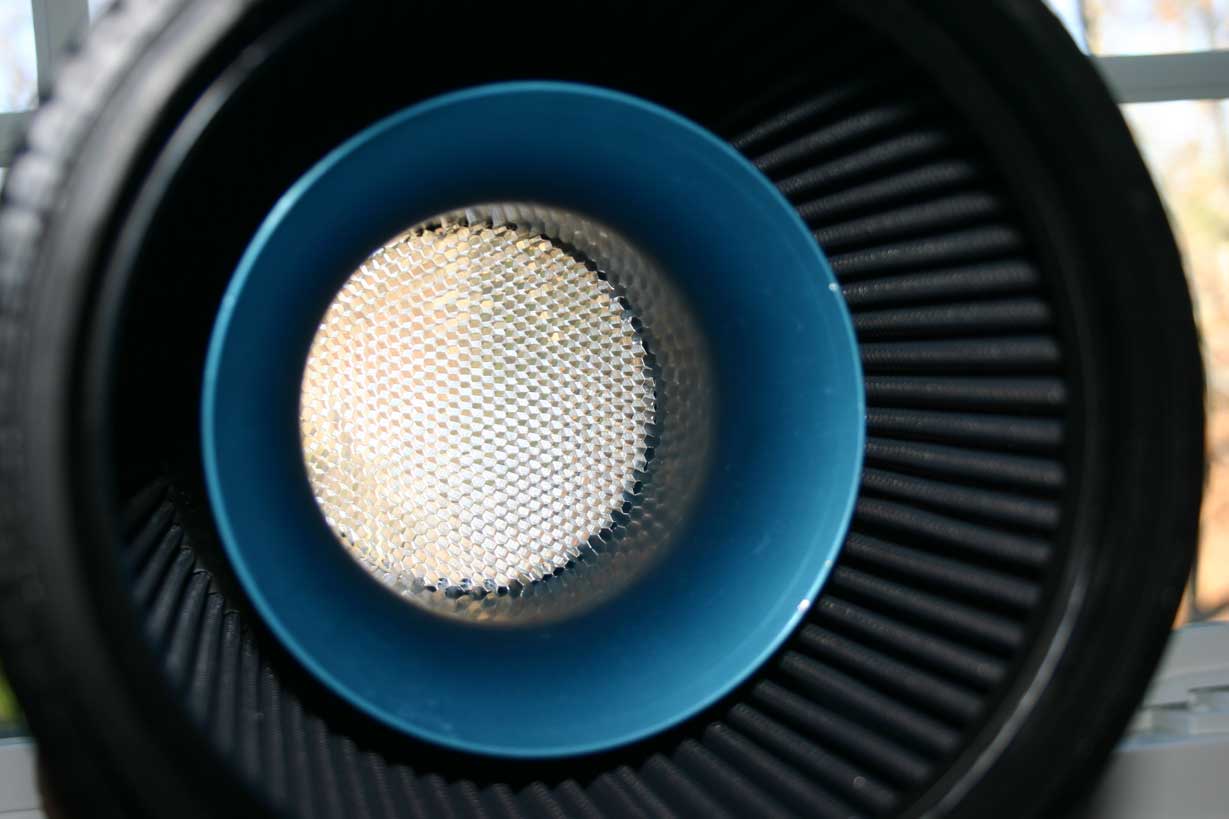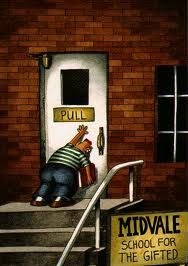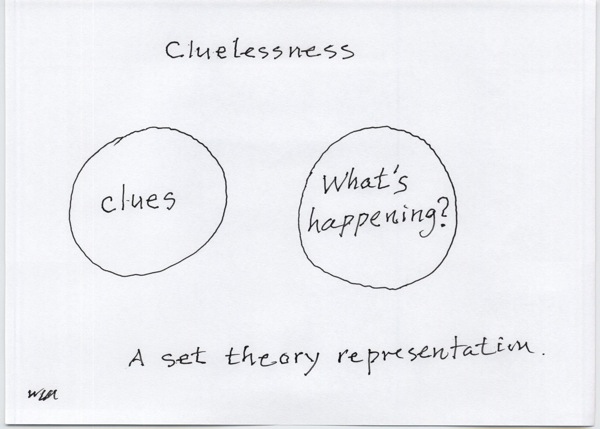MAF screen material. What size mesh?
#27
Its for a 3.5"OD tube which the std ID for intake tubing purposes is 3.375". It should fit right in unless you have a heavier wall thickness. One 3.5" OD I tube received recently is a heavier 0.083" wall thickness rather than the usual 0.0625 wall thickness. Since I wasnt using it for a maf tube it didn't matter.
#29
you might want to get this instead anyway, been thinking of ordering one myself
http://www.treadstoneperformance.com...w+Straightener
http://www.treadstoneperformance.com...w+Straightener
#30
I bought 3 of them..
Actually I bought 2 of them, a 3" and 3.5"
But they gave me 2 of the 3.5" as well as the 3".
On my turbo setup I noticed a considerable improvement stabilizing the Maf readings.
Thanks Team
#31
Honeycomb replacement
I ordered one of the 3.5" honeycomb airflow straighteners from Treadstone. I have Racing Beat's REVi intake, and the 3.5" slipped in really nice into the inlet horn inside the air filter (an interference fit, in the engineering sense). I would guess it would fit into the MAF tube just as well.

I'm trying a bit of gorilla glue to hold it in. We'll see how it goes!

I'm trying a bit of gorilla glue to hold it in. We'll see how it goes!
Last edited by Joe RX-8; 01-14-2012 at 11:32 AM.
#32
The honeycomb is an interesting idea. Is there any before/after data? I suspect though that an intuitive feeling about what it or the screens do will be quite far from the truth. Intuition about such things comes, at least for me, largely from the liquid or laminar flow picture. With the hole and wire sizes involved in the screens, air viscosity is likely to play an important, if not dominant role, hence the effects will vary from what makes 'sense'. In the honeycomb case, flow resisitance may go up more sharply than the simple open area would indicate (due to viscosity), or perhaps it goes down due to the flattened "wire" having a better c/d than a round one. dunno!
#36
I like my stable idle and some built-in Foreign Object Damage protection.
Here's a nice experiment for those with any interest:
http://www.ls1gto.com/forums/showthread.php?t=180588
Here's a nice experiment for those with any interest:
http://www.ls1gto.com/forums/showthread.php?t=180588
#37
RacingBeat claims 1 hp loss due to each screen at high RPM.
For our 1.3 liter engine running at 9000 rpm, with some rough assumptions we are pumping 195 liters/sec through the engine (1.3 liters * 9000 rev/sec / 60 sec/min; =~195 liters/sec = 0.195 m^3/sec). For a 3.5" diameter tube, this equates to 31.4 m/s airflow through the tube (0.195 m^3/sec / [3.5/2"^2 * pi]; work out the units =~70.2 mph). This is the worst-case speed, too (though I am sure someone will correct me on my math and assumptions ).
).
One question I don't know how to address is that the honeycomb is about 2 cm thick. So does the surface drag from air flowing through the length of the honeycomb offset the increased void area compared to the wire?
For our 1.3 liter engine running at 9000 rpm, with some rough assumptions we are pumping 195 liters/sec through the engine (1.3 liters * 9000 rev/sec / 60 sec/min; =~195 liters/sec = 0.195 m^3/sec). For a 3.5" diameter tube, this equates to 31.4 m/s airflow through the tube (0.195 m^3/sec / [3.5/2"^2 * pi]; work out the units =~70.2 mph). This is the worst-case speed, too (though I am sure someone will correct me on my math and assumptions
 ).
).One question I don't know how to address is that the honeycomb is about 2 cm thick. So does the surface drag from air flowing through the length of the honeycomb offset the increased void area compared to the wire?
Last edited by Joe RX-8; 01-16-2012 at 02:26 PM. Reason: Dropped an x^-1 and a squared or something :)
#38
Don't have a clue how the honeycomb would affect the readings, I do remember that Kane was having a hell of a time with his tuning calculations, until he replaced that screen.
Don't forget that laminar flow is not the intent - the screen is there to cause 'a predictable and controlled turbulence'.......
Don't forget that laminar flow is not the intent - the screen is there to cause 'a predictable and controlled turbulence'.......
#40
Velocity = 31.4 m/s
Diameter=3 mm (honeycomb cell cross section)
Air density: 1.2 kg/m^3
Air dynamic viscosity: 1.983 x10^-5 kg/ms
Re=5700 (in the honeycomb; in the MAF tube without the honeycomb: 169,000)
So the honeycomb at least does serve to reduce the Reynolds number, but the flow is still turbulent over most of the engine operating speeds. The second purpose of the screen is that you don't want to wait the typical length for the flow to develop into a "stable" flow. In our case here, this would be about 115 inches in the MAF tube alone, but only about 40 inches in the honeycomb.
It's way too early in the morning to be making these calculations, so please correct me if I miscalculated...
Last edited by Joe RX-8; 01-16-2012 at 02:31 PM. Reason: Woooah bad numbers!
#41
isnt it not about the total flow--but about the readable flow?
My car runs fine without a screen. I am sure it helps that I idle at 1.2K. But in thinking about the transient times the maf has to differentiate --then this may be helpful in that regard?
In otherwords a faster correctly responding maf?
My car runs fine without a screen. I am sure it helps that I idle at 1.2K. But in thinking about the transient times the maf has to differentiate --then this may be helpful in that regard?
In otherwords a faster correctly responding maf?
#42
Yeah, I was wondering that as well, so when you do the Reynolds number calculation, it comes out:
Velocity = 7.86 m/s
Diameter=3 mm (honeycomb cell cross section)
Air density: 1.2 kg/m^3
Air dynamic viscosity: 1.983 x10^-5 kg/ms
Re=1427 (in the honeycomb; in the MAF tube without the honeycomb, 42,285)
So the honeycomb at least does serve to generate laminar flow. The second purpose of the screen is that you don't want to wait the typical length for the flow to develop into a "stable" flow. In our case here, this would be about 75 inches in the MAF tube alone, but only about 10 inches in the honeycomb.
It's way too early to be making these calculations, so please correct me if I miscalculated...
Velocity = 7.86 m/s
Diameter=3 mm (honeycomb cell cross section)
Air density: 1.2 kg/m^3
Air dynamic viscosity: 1.983 x10^-5 kg/ms
Re=1427 (in the honeycomb; in the MAF tube without the honeycomb, 42,285)
So the honeycomb at least does serve to generate laminar flow. The second purpose of the screen is that you don't want to wait the typical length for the flow to develop into a "stable" flow. In our case here, this would be about 75 inches in the MAF tube alone, but only about 10 inches in the honeycomb.
It's way too early to be making these calculations, so please correct me if I miscalculated...
"The main methods adopted in the flow straightening and turbulence reduction system include the use of wire-mesh screens, honeycomb and contractions. According to widely accepted views, the screens and contractions reduce the longitudinal components of turbulence or mean-velocity variation to a greater extent than the lateral components. Honeycombs exhibit greatest importance in straightening out the flow, reducing the lateral component of the mean wind and the larger turbulent eddies. Honeycomb, operating with screens and contractions, are often found in many wind tunnels. No matter in previous designs of wind tunnel or the modern ones, honeycomb seems to be absolutely essential in producing high quality flows in wind tunnels."
So a 'comb is not a direct replacement for a screen insofaras the essential function is different; yet they are sold as GM throttle-body screen replacements.

#44
^ Using your 240 gm/sec, I get 78 mph at a more reasonable than standard temperature. Back of the envelope above doesn't change the general notion that the effect of screen and honeycomb is quite different.
The real mystery: Is there any instance whatsoever where you've ever behaved in a civilized manner throughout the duration of even a single thread?
<blech>
What's the point? Welcome to my Ignore List, TeamRX8.
The real mystery: Is there any instance whatsoever where you've ever behaved in a civilized manner throughout the duration of even a single thread?
<blech>
What's the point? Welcome to my Ignore List, TeamRX8.
Last edited by HiFlite999; 01-16-2012 at 09:52 PM.
#46
Don't have a clue how the honeycomb would affect the readings, I do remember that Kane was having a hell of a time with his tuning calculations, until he replaced that screen.
Don't forget that laminar flow is not the intent - the screen is there to cause 'a predictable and controlled turbulence'.......
Don't forget that laminar flow is not the intent - the screen is there to cause 'a predictable and controlled turbulence'.......
Yes I did, at low flow and idle is was a big difference in reliable flow data from one screen and zero screens.
#47
Yes, but a turbo induces flow patterns not likely to be encountered with an NA setup, and the intake piping also tends to be much more compromised due to space limitations. Piping with open elbows will always complicate the situation. My NA idles rock solid.
However, at least one member here has this very same honeycomb and they have been used successfully on a number of vehicles. It's neither new nor unproven.
However, at least one member here has this very same honeycomb and they have been used successfully on a number of vehicles. It's neither new nor unproven.
#48
#49
At idle (i.e., 0 boost)? In the unscientific experiments I have done, the only time you need a screen is below 1000 RPM. Once you get on the throttle at all, you can run without the screens. The flow rate past the MAF at idle is going to be exactly the same NA or Turbo (unless you have fiddled with your idle speed), which implies that the flow pattern will be exactly the same. The pipe length to fully develop the flow is huge (several feet), so that ain't gonna happen even in a NA application.




